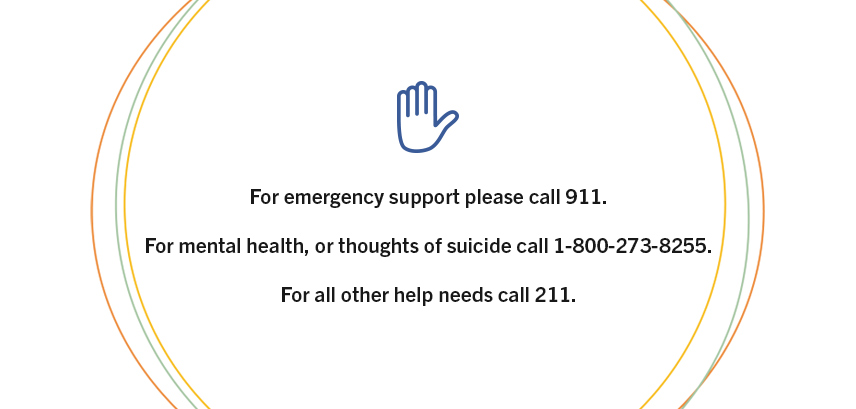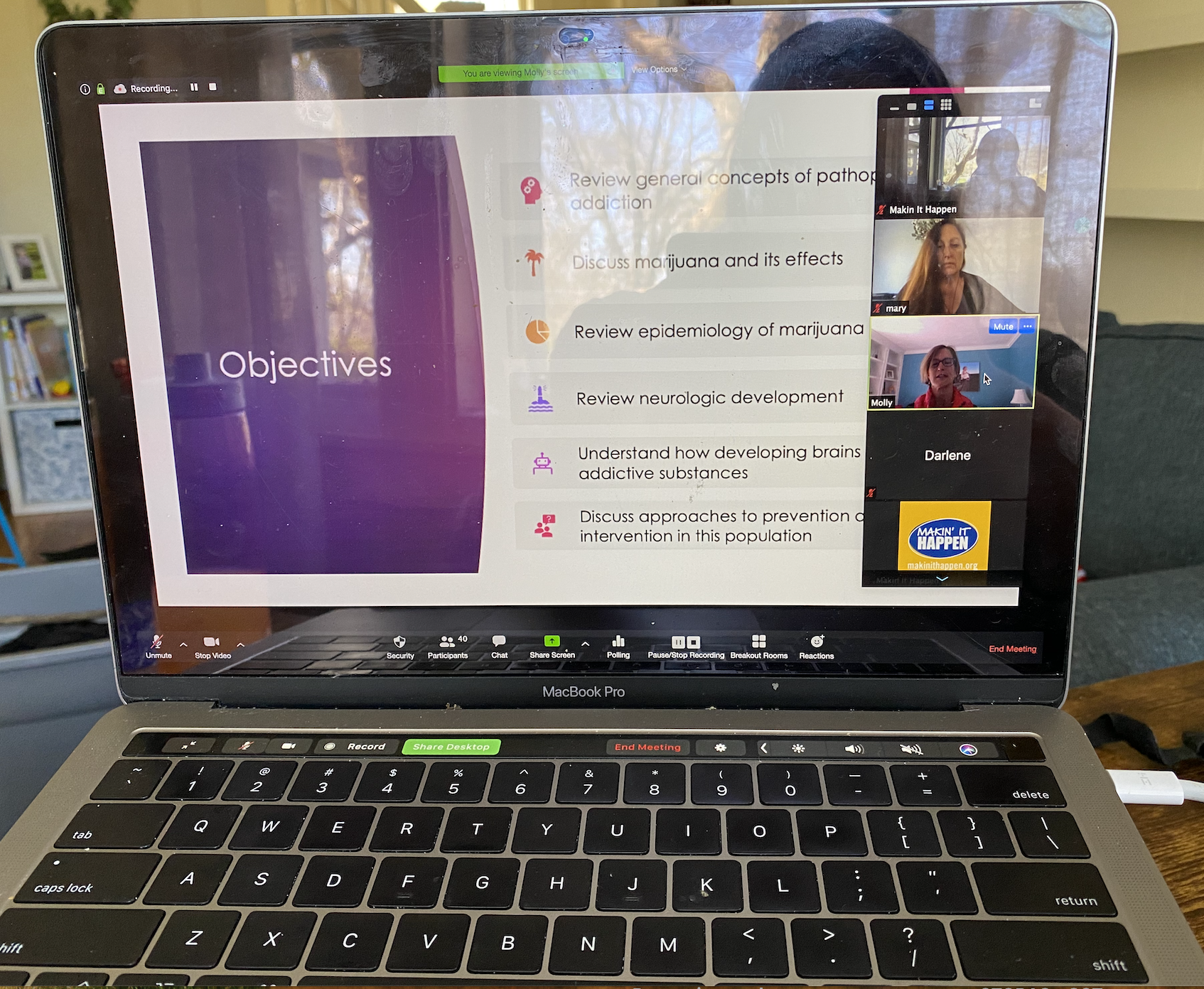Makin’ It Happen continued our weekly forum, ‘I’m ok, are you ok?’ Wednesday with presenter Dr. Molly Rosigno who is an Addiction Medicine Specialist from Catholic Medical Center and NH Healthy Families. Dr. Rossingnol discussed the effects of marijuana on the brain for National Prevention Week.
Dr. Rosignol began her presentation by discussing addiction. There are many factors that play into why an individual may become addicted to a substance including marijuana. Often it can be genetic, trauma can play a role, frequency of use, and many other risk factors play into whether an individual develops a substance use disorder.
Addiction works as a cycle in the brain. After use the user experiences relaxation and euphoria, followed by irritability and anxiousness that translates to cravings to use again. Initially these effects occur in different sections of the brain, however over time the cycle is streamlined leading to the process becoming more efficient, and faster. This is how addiction works.
Dr. Rosignol pointed out that there are some in our society that may say substance use is a choice. But the evidence is clear that craving that occurs in the frontal cortex is not a choice.
Dr. Rosignol went on to discuss neurological development. The brain is particularly vulnerable during adolescence to developing an addiction. Impulsivity and compulsivity are high because the frontal lobe is not fully developed. Substances such a marijuana increase the potential for addiction as a result. It becomes a sensation that is needed.
Dr. Rosignol pointed out that cannabis has over 400 biological compounds with 100-200 brain active cannabinoids that activate the brain’s Endocannabinoid System. The Endocannabinoid System is essentially brain receptors that react to cannabis. THC (Tetrahydrocannabinol) is the chemical responsible for most of marijuana’s psychological effects.
SAMHSA indicates that “marijuana is the most commonly used illegal substance in the U.S. and its use is growing”. Marijuana is the most used illegal drug in America 43.5 million people have used. Marijuana and THC are illegal at the federal level, however many states including Vermont, Maine and Massachusetts have legalized its use.
Dr. Rosignol pointed out that the perception of risk of marijuana has become lower over the years. She indicated there’s several reasons for this including commercialization and medicalization. Marijuana use is going up across the United States. The result is many young people do not consider marijuana use a risky behavior.
Dr. Rosignol went on to discuss addiction and diagnosis of Cannabis Use Disorder. Pointing out that not everyone that uses a substance is going to become addicted. However, she said it’s worth noting that they ‘are seeing an uptick in marijuana use disorder cases’.
Dr. Rosignol said that the DSM 5 (Diagnostic and Statistical Manual of Mental Disorders) is particularly important to her as a provider that works with patients including adolescents with Cannabis Use Disorder. The DSM 5 offers providers a tool to use in order diagnose substance use disorders. Dr. Rosignol often finds that youth with a Marijuana Use DIsorder commonly meet the following criteria from the DSM 5:
- Inability to manage commitments
- Continuing using even when it’s causing problems in relationships
- Giving up important activities because of use
Dr. Rosignol shared some statistics regarding Cannabis Use Disorder. Cannabis Use Disorder impacts 9% of those that use it as adults. If cannabis use is started in adolescence that number goes up to 18%. If an adolescent is a daily user of cannabis their propensity to have a marijuana use disorder goes up to 25-50%. Physical dependence/withdrawal for those with Cannabis Use DIsorder manifests as irritability, insomnia, vivid dreams, craving, anxiety increase, dysphoria.
Some of the effects of cannabis use include relaxation and euphoria. However, heart rate elevation, balance and coordination issues, amotivation syndrome, lower socio economic status in the future, lower IQ for those that started using before the age of 18, hunger, sleepiness, disorientation, and paranoia are all associated with cannabis use.
Dr. Rosignol pointed out that one of the best tools we have at our disposal to comat Cannabis Use Disorders is prevention and intervention. Protective factors for adolescents play an important role in their substance use. If a young person is involved in academics, sports or music and has a trusted adult in their life it can increase their propensity to be less impacted by Cannabis Use Disorder. “Protective factors” she said “improve the executive functioning of the frontal lobe”. Additionally, tools such as S2BI (Screen to Brief Intervention) are useful tool providers can use to diagnose severity of substance use disorders.
Dr. Rosignol pointed out that it is important to remember that if someone “has an addiction it’s the addiction that is the problem not the substance”. Cannabis Use Disorder is the most common diagnosis for youth. The good news is counseling and mutual help for adolescents works well for young people
Addiction is a chronic illness of brain recicurity. Marijuana exposure in youth and adolescents has known risks. Screening and intervention can be key in reducing risks of substance use. Referral for treatment works!
Join us next week for the I’m ok, are you ok forum entitled Rali NH: CODE 3/Rali Cares Virtual Trailer Tour – Hidden in plain sight. To register visit https://ralinh.eventbrite.com.



